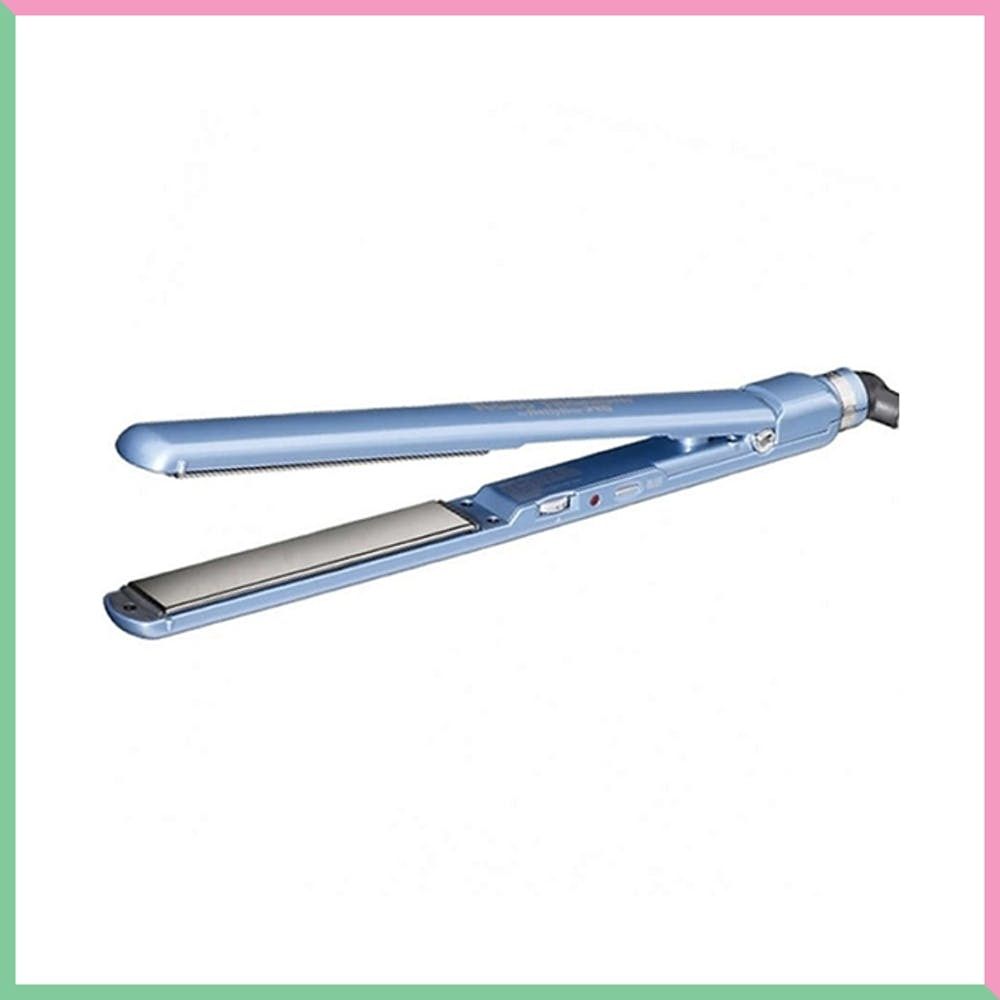Just like finding true love or finally deciding to take the plunge with a perm, the search for a good quality flat iron can be a daunting one. Do you need a ceramic or titanium iron? What’s the right plate size to look for? If you’re on the hunt for some new heat tools to help you achieve a hot hairstyle for fall, have no fear — we’ve got your back. These are the things you should consider before laying down the cash for a new straightener.
Price: Like with any purchase, you need to factor in your price preferences. You could opt for low-end straighteners from Target or Walmart and only shell out $20. But in choosing the cheaper route, you risk sacrificing quality. Unfortunately, for those of us with thick or textured hair, the higher-end straighteners will work more effectively than the drugstore options. Pricier versions also tend to work faster, leaving your hair with less damage and breakage.
Temperature: Your hair texture will determine which temperatures you need to use to achieve your desired look. For thin and fine hair, lower heat options are a necessity. Look for a flat iron with adjustable heat settings and a minimum that goes below 180 degrees Fahrenheit. Thick and textured hair needs adjustable heat settings that go up to the 400-degree range to ensure that the hair responds to the iron.
Ceramic: Ceramic irons heat up evenly and lack “cool spots” that other irons often have, which means that you’ll achieve a more even straightening job. For this reason, ceramic irons are also known for keeping frizz at bay and smoothing out the hair, especially for fine, thin strands. If you think ceramic is the right choice for you, look for a flat iron like the Chi Ceramic Hairstyling Iron ($100). Oftentimes, ceramic irons are also coated with tourmaline, so if you’re torn between the two, we suggest FHI HEAT® Platform 1¼” Tourmaline Ceramic Professional Hair Styling Iron ($150).
Titanium: Titanium irons are known for heating up quickly and staying hot consistently during use. This is because titanium produces 60% more negative ions than ceramic irons. The ionic charge in titanium helps to smooth hair and prevent frizz from forming during the straightening process. Due to its ability to maintain a high heat for a long period of time, a titanium iron would be a good option for someone with thick, coarse hair. It’s also often used in professional salons. A popular choice on the titanium market is the BaBylissPRO Nano Titanium-Plated Ultra-Thin Straightening Iron ($130).
Tourmaline: Tourmaline makes it possible to straighten hair with less heat than ceramic and titanium irons because of its high negative ion count. Tourmaline differs from ceramic and titanium irons because it can continuously produce negative ions, instead of simply creating them when turned on. This detail helps give greater control and results, but with less heat. Having to use less heat on the hair means less damage in the long run, making it a good choice for both thick, curly hair and fine, straighter textures. It’s also the newest material being used in heat styling. Because of this, tourmaline straighteners can sometimes be pricier than its older competitors. Curious about tourmaline? Try the Sedu Revolution Styling Iron ($150).
Plate Size: Your hair thickness and length will determine the plate size you should look for. For really short hair, you’ll want to look for a narrower plate that measures around half an inch. For thick, curly or long hair, it’s best to look for wider plates that measure around 1-1 1/2 inches. It’s good to keep in mind, though, that a narrower plate makes it easier to get to hard-to-reach spots. If you’re willing to splurge a bit, consider purchasing a travel-sized iron to have on hand to tackle those spots.
Want more hair tips? Follow us on Pinterest!
Brit + Co may at times use affiliate links to promote products sold by others, but always offers genuine editorial recommendations.
(Photos via Getty)


